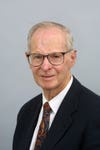Gossamer Condor Inventor Dies
Aerospace wouldn't be the same without his contributions

Aerospace genius Dr. Paul MacCready, founder of AeroVironment, Inc., passed away yesterday at 81 after an undisclosed illness. He had a list of achievements that would make anyone proud. His Gossamer Condor won the Kremer prize in 1977 for a human-powered flight; its successor, the Gossamer Albatross, was the first human-powered airplane to cross the English Channel. He created GM’s ground-breaking solar-powered car, the Sunraycer, excelled as both a sailplane designer and pilot, and he developed many high-altitude, long-duration unmanned vehicles, including NASA’s Helios. Under his mentorship at AeroVironment, his team of engineers have done everything from develop miniature flying surveillance robots to design the most efficient ceiling fan blade ever.
But MacCready will be remembered most for what he represented—the noble, ever-optimistic pursuit of advanced technology in the name of conservation and efficiency. In 2003, MacCready participated in Popular Science’s Centennial of Aviation roundtable discussion about the future of aviation, which involved many aerospace luminaries, including Burt Rutan, Peter Diamandis, and George Muellner. He made one of the greatest impressions of the group—on this observer anyway—with a single comment: “Do more with less.” By that he meant, when designing a vehicle—airplane, automobile, bicycle, whatever—don’t spend time trying to get more power into it. Rather, focus on getting it to consume the least amount of power possible. Words to live by, and a supremely elegant approach to all of the challenges he faced. It may not be the official mantra at AeroVironment, but it’s evident in everything they do there.—Eric Adams